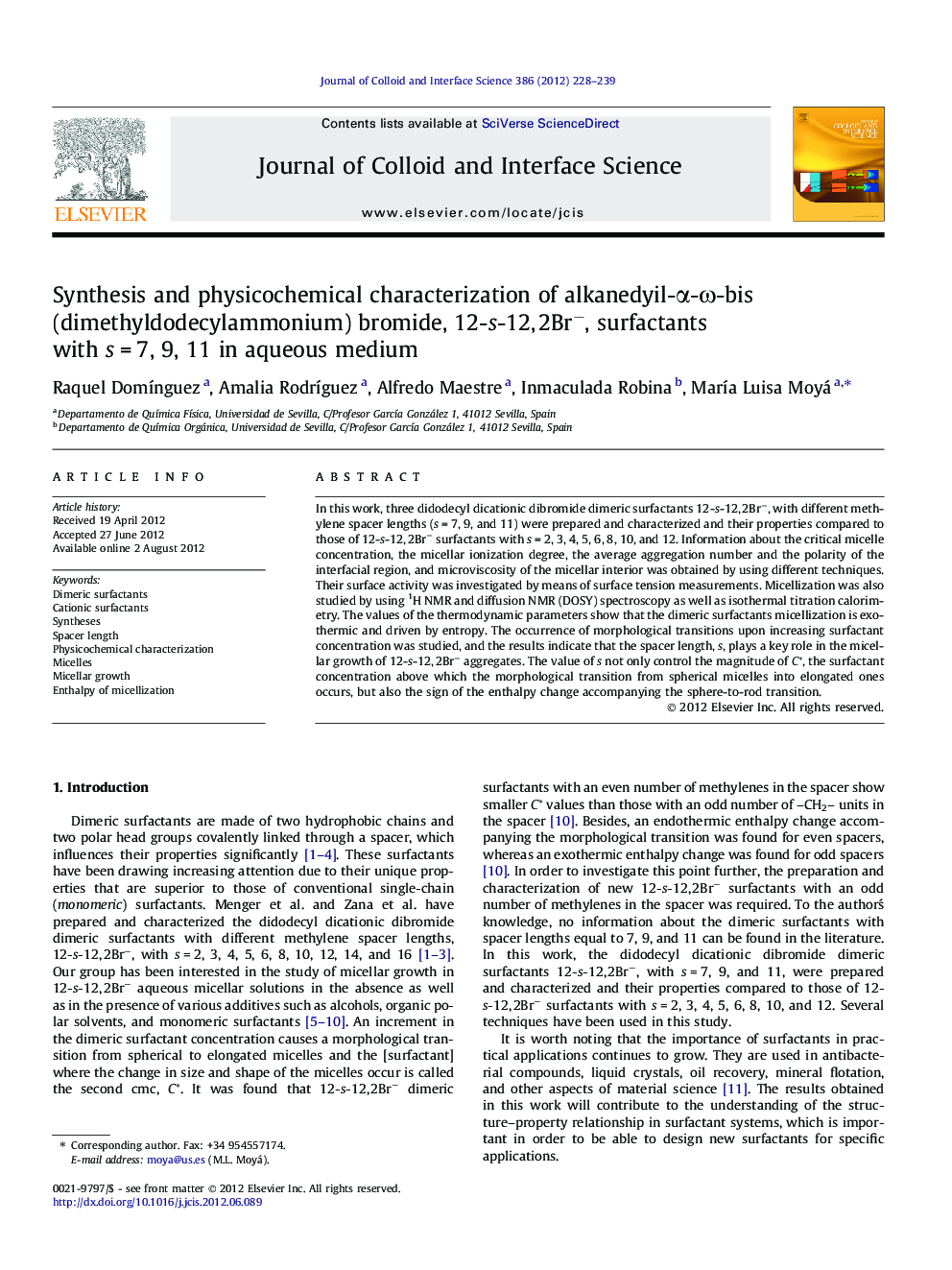| Article ID | Journal | Published Year | Pages | File Type |
|---|---|---|---|---|
| 608113 | Journal of Colloid and Interface Science | 2012 | 12 Pages |
In this work, three didodecyl dicationic dibromide dimeric surfactants 12-s-12, 2Br−, with different methylene spacer lengths (s = 7, 9, and 11) were prepared and characterized and their properties compared to those of 12-s-12, 2Br− surfactants with s = 2, 3, 4, 5, 6, 8, 10, and 12. Information about the critical micelle concentration, the micellar ionization degree, the average aggregation number and the polarity of the interfacial region, and microviscosity of the micellar interior was obtained by using different techniques. Their surface activity was investigated by means of surface tension measurements. Micellization was also studied by using 1H NMR and diffusion NMR (DOSY) spectroscopy as well as isothermal titration calorimetry. The values of the thermodynamic parameters show that the dimeric surfactants micellization is exothermic and driven by entropy. The occurrence of morphological transitions upon increasing surfactant concentration was studied, and the results indicate that the spacer length, s, plays a key role in the micellar growth of 12-s-12, 2Br− aggregates. The value of s not only control the magnitude of C*, the surfactant concentration above which the morphological transition from spherical micelles into elongated ones occurs, but also the sign of the enthalpy change accompanying the sphere-to-rod transition.
Graphical abstractFigure optionsDownload full-size imageDownload high-quality image (199 K)Download as PowerPoint slideHighlights► Cationic dimeric surfactants 12-s-12, 2Br− (s = 7, 9, and 11) were prepared. ► Their physicochemical characterization was carried out. ► Calorimetric measurements show that micellization is exothermic and entropy driven. ► A surfactant concentration increment results in sphere-to-rod transitions. ► For odd spacers, the morphological transition is an exothermic process.
